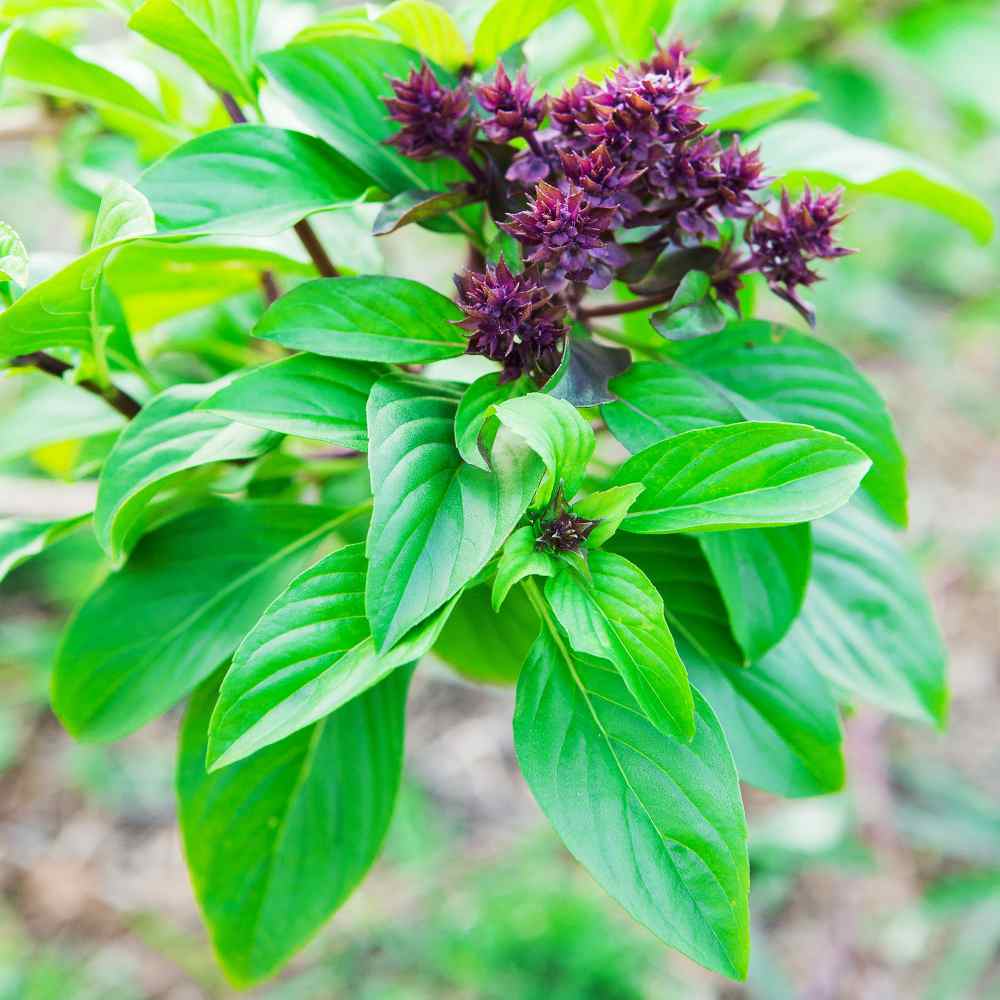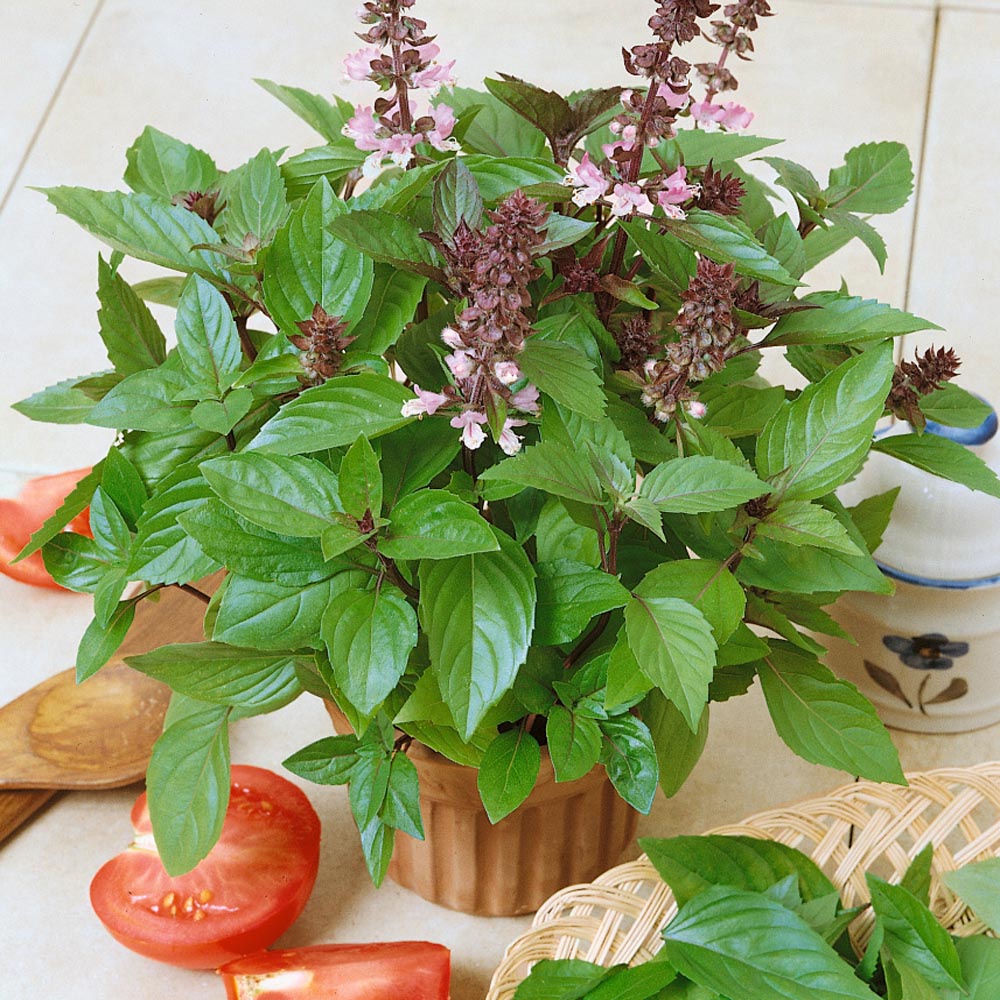-
CATEGORY ::
- All Seeds /
- All Herb Seeds /
- All Basil Seeds




Basil Seeds - Cinnamon
About...
Cinnamon Basil (Ocimum Basilicum Cinnamon) - Easy to grow from Basil seeds, Cinnamon Basil makes a great addition to the herb garden or grow it in a container and enjoy the beauty of this attractive herb plant. This Basil herb plant grows 24 to 36 inches high and 12 to 18 inches wide.MORE BASIL OPTIONS
Herb Specifications
SEASON
Annual
USDA ZONES
4 - 9
HEIGHT
12 - 16 inches
BLOOM SEASON
Summer
BLOOM COLOR
Purple
ENVIRONMENT
Full sun
SOIL TYPE
Well-drained, pH 6.1 - 7.3
DEER RESISTANT
Yes
Planting Directions
TEMPERATURE
60F
AVERAGE GERM TIME
14 - 21 days
LIGHT REQUIRED
Yes
DEPTH
1/4 inch
SOWING RATE
5 - 6 seeds per inch
MOISTURE
Keep moist until germination
PLANT SPACING
Rows 18 inches a part; thin seedlings 6 inches
Culinary Garden Herb
Cinnamon basil has a variety of uses in the culinary world, has a flavor reminiscent of cinnamon (hence the name!).

Herbal Annual
How To Grow
Basil seeds can be sown directly in the garden after all danger of frost has passed. In areas with shorter growing seasons, however, it is ideal to start seeds indoors 4-8 weeks before the last expected frost. Sow in rows with 1 seed every inch. Space rows 18 inches apart, and thin established seedlings to 6 inches apart. Plant at 1/4" deep, and keep seeds moist until germination. Grow in rich, well-drained soil in an area of full sun. Pinch the tip of the center shoot after the first 6 weeks of growth to encourage branching.
- Environment: full sun
- Soil: well-drained w' pH 6.1-7.3
- Plant spacing: rows 18" apart

Plant Specifications
Cinnamon basil is an annual herb that grows in USDA zones 4 through 9. It serves as an excellent garden companion, as it repels mites and aphids while simultaneously attracting pollinators to the garden with its fragrant flowers.
- Bloom season: summer
- Bloom color: purple
- Height: 12-16 inches
Cinnamon Basil (Ocimum Basilicum Cinnamon) - Easy to grow from Basil seeds, Cinnamon Basil makes a great addition to the herb garden or grow it in a container and enjoy the beauty of this attractive herb plant. This Basil herb plant grows 12 to 16 inches high and 12 to 18 inches wide. The sturdy stems are dark purple red, with dark green, cinnamon scented leaves growing up to 2 inches long.
Cinnamon Basil has distinctive cinnamon-colored stems, purple flowers tinged with bronze, and small to medium-sized, dark green leaves. Cinnamon Basil has a strong cinnamon scent. Basil culinary herb is at its most flavorful when fresh. The best time to harvest is just as the plant starts to set flower buds, well before flowers bloom. For harvesting, cut stems just before flowers open, strip leaves and use fresh, or dry on tray in dark, airy place. Leaves may be frozen. Basil herb uses include tomato dishes, pasta sauces, vegetables and soups. You can also use basil in the garden as a companion plant to repel aphids, mites, and tomato hornworms.
How To Grow Basil From Seed: Sow Basil seeds in the garden after all danger of frost has passed. For areas with short growing seasons, start the herb seeds indoors 4 - 8 weeks before setting out. Grow the Cinnamon Basil plant in a rich, well-drained, soil and in full sun. Pinch the tip from the center shoot of Basil after it has grown for 6 weeks to force side growth and prevent early flowering. If flower stalks develop, simply snip them off.
Approximate Seeds Per Ounce: 20,000



























